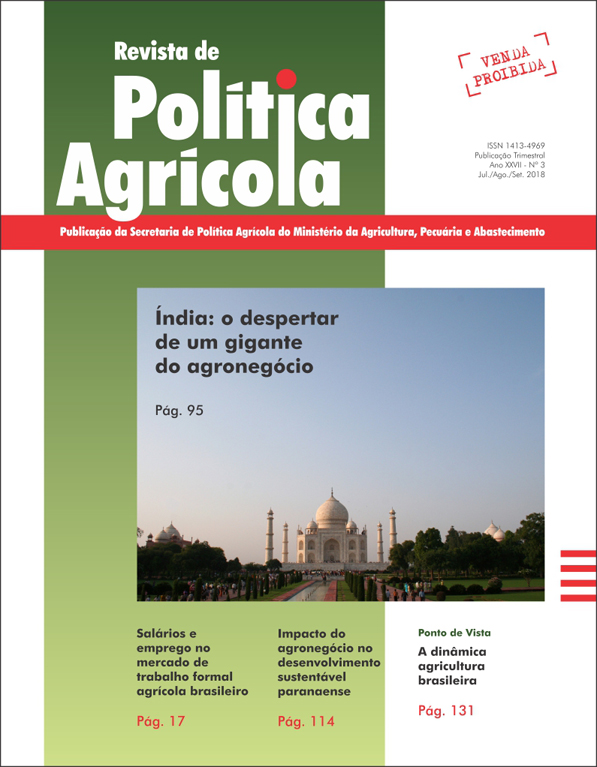Land-saving and Labor-saving effects in Brazilian agriculture
Keywords:
agricultural production factors, productivity, technologyAbstract
Global population growth combined with rising per capita income in developing countries has increased the demand for food and other agricultural commodities. At the same time, environmental concerns and constraints are increasing to preserve available natural resources. To reconcile these two phenomena, technology plays an essential role. This work measured the landsaving and labor-saving effects for eleven crops in Brazil by a regional perspective. The methodology adopted by Martha Junior et al (2012) and Vieira Filho (2016) was adjusted for this purpose. The results point to a land-saving effect of 10.8 million hectares and a labor-saving effect of 1.1 million of workers between the five-years periods 2005/09 and 2011/15, with corn and soybean as the main responsible for the land-saving effect and corn, sugarcane and coffee as responsible for the laborsaving effect. Due to this, there is a regional disparity of the land-saving effect, observed mainly in the South and Midwest regions, and the labor-saving effect, observed mainly in the Northeast and Southeast regions. This demonstrates that technology is not adopted homogeneously in Brazilian agriculture.Downloads
Published
2019-03-29
How to Cite
Silva, R. P. da. (2019). Land-saving and Labor-saving effects in Brazilian agriculture. Revista De Política Agrícola, 27(3), 69–81. Retrieved from https://rpa.sede.embrapa.br/RPA/article/view/1445
Issue
Section
Artigos Científicos


